This wonderful collection covers a variety of art
forms from the 1848–1914 period, including a superb Impressionists
section. Its setting, in a converted railway station, is equally
impressive. Built in 1900, in time for the Paris Exposition, the station
was in use until 1939, when it was closed and largely ignored, bar its
use as the location for Orson Welles’ 1962 film, The Trial.
It was later used as a theatre and as auction rooms, and in the
mid-1970s was considered for demolition. In 1977, the Paris authorities
decided to save the imposing station building by converting it into this
striking museum.
1 rue de la Légiond’Honneur, 75007 01 40 49 48 14
www.musee-orsay.fr
Open 9:30am–6pm Tue–Sun (Thu till 9:45pm); closed 1 Jan, 1 May, 25 Dec Admission
€8 (under 18s free, under 26s EU only free); combined ticket for museum
and temporary exhibitions €9.50 (€7.00 18–25s non-EU). Tickets can be
bought online.
|
|
As soon as you enter the
gallery, collect a map of its layout. Escalators near the entrance lead
to all three floors. The ground floor houses fine works from the early
to mid-19th century, as well as striking Oriental works, decorative arts
and a book shop. The middle level includes Naturalist and Symbolist
paintings and sculpture terraces. The upper level is home to the
Impressionist and Post-Impressionist galleries. Some rooms may be closed
for renovation – call ahead.
|

Musée d’Orsay Upper Level
|
The busy museum
restaurant serves lunch and dinner on Thursdays. For a snack or a drink
try the upper level café (Des Hauteurs) or the self-service mezzanine
café just above.
|
|
|
Regular music concerts are held. Call 01 40 49 47 50.
|
|
Top 10 FeaturesThe Building The
former railway station which houses this museum is almost as stunning
as the exhibits. The light and spacious feel when one first steps
inside, after admiring the magnificent old façade, takes one’s breath
away.
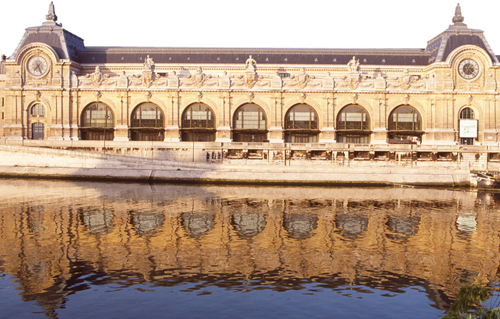
Musée d’Orsay façade
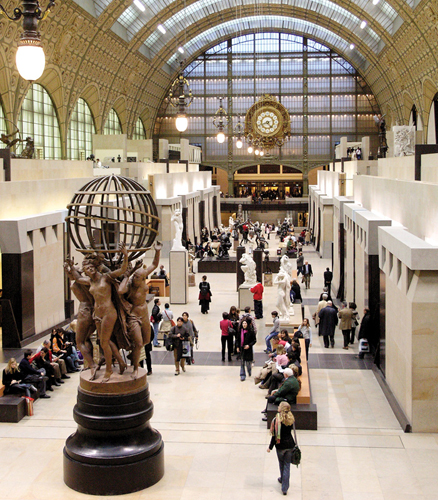
Van Gogh Paintings The
star of the collection is Vincent Van Gogh (1853–90) and the most
striking of the canvases on display is the 1889 work showing the
artist’s Bedroom at Arles. Also on display are self-portraits, painted with the artist’s familiar intensity
(Room 35). Le Déjeuner sur l’Herbe Edouard
Manet’s (1832–83) controversial painting (1863) was first shown in an
“Exhibition of Rejected Works”. Its bold portrayal of a classically nude
woman enjoying the company of 19th-century men in suits brought about a
wave of
criticism (Galerié Seine). Olympia
Another Manet portrayal (1865) of a naked courtesan, receiving
flowers sent by an admirer, was also regarded as indecent and shocked
the public and critics, but it was a great influence on later artists
(Room 14).
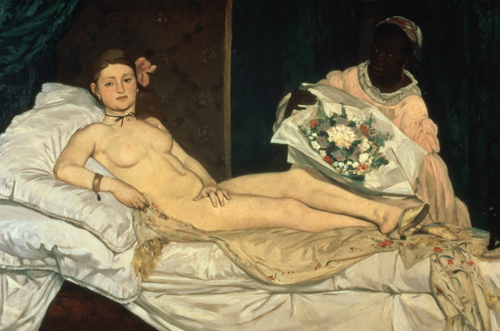
Blue Waterlilies Claude
Monet (1840–1926) painted this stunning canvas (1919) on one of his
favourite themes. His love of waterlilies led him to create his own
garden at Giverny to enable him to paint them in a natural setting. This
experimental work inspired many abstract painters later in the 20th
century
(Room 34). Degas’ Statues of Dancers Edgar Degas’ (1834–1917) sculpted dancers range from the innocent to the erotic. The striking Young Dancer of Fourteen (1881) was the only one exhibited in the artist’s lifetime
(Room 31).
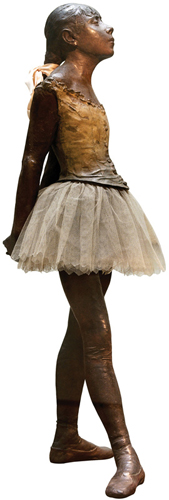
Jane Avril Dancing Toulouse-Lautrec’s (1864–1901) paintings define Paris’s belle époque. Jane Avril was a Moulin Rouge dancer and featured in several of his works,
like this 1895 canvas
(Room 47). Dancing at the Moulin de la Galette One
of the best-known paintings of the Impressionist era (1876), the
exuberance of Renoir’s (1841–1919) work captures the look and mood of
Montmartre
(Room 32).
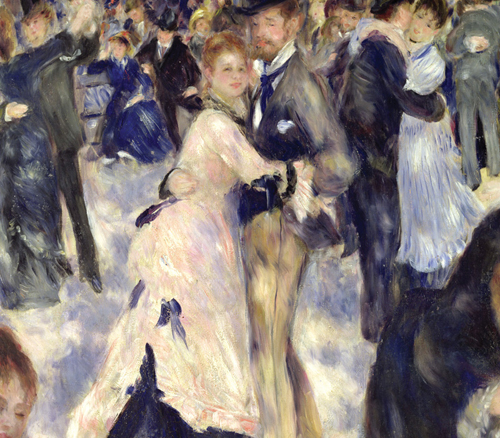
La Belle Angèle This
portrait of a Brittany beauty (1889) by Paul Gauguin (1848–1903) shows
the influence of Japanese art on the artist. It was bought by Degas, to
finance Gauguin’s first trip to Polynesia
(Room 43). Café des Hauteurs As
a rest from all the art, the Musée d’Orsay’s café is delightfully
situated behind one of the former station’s huge clocks, making a break
here an experience in itself. The food is good too.
|